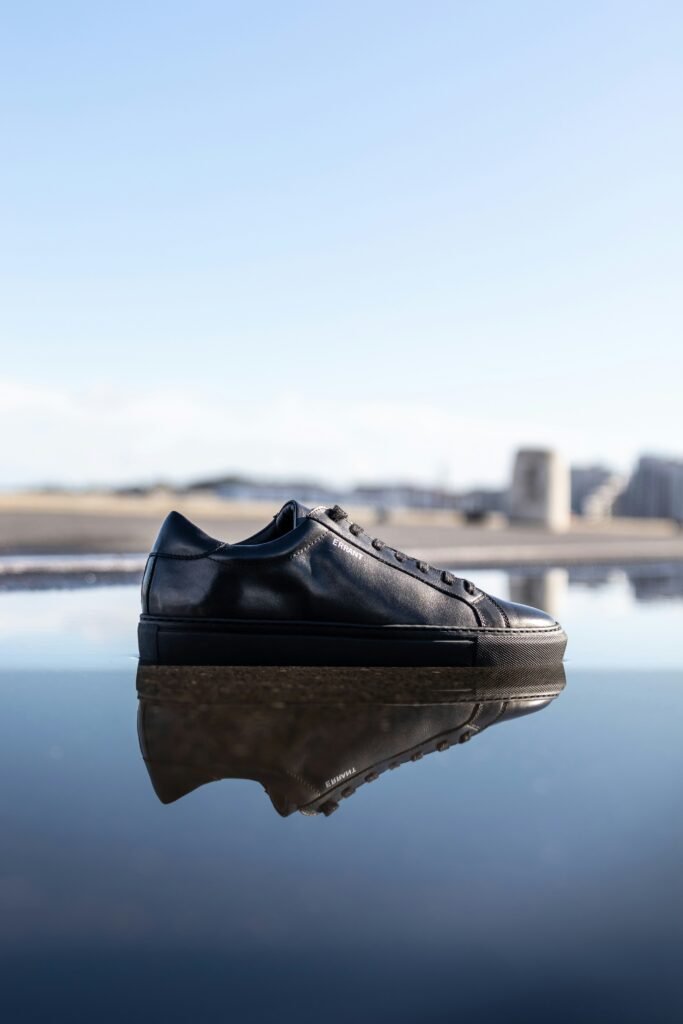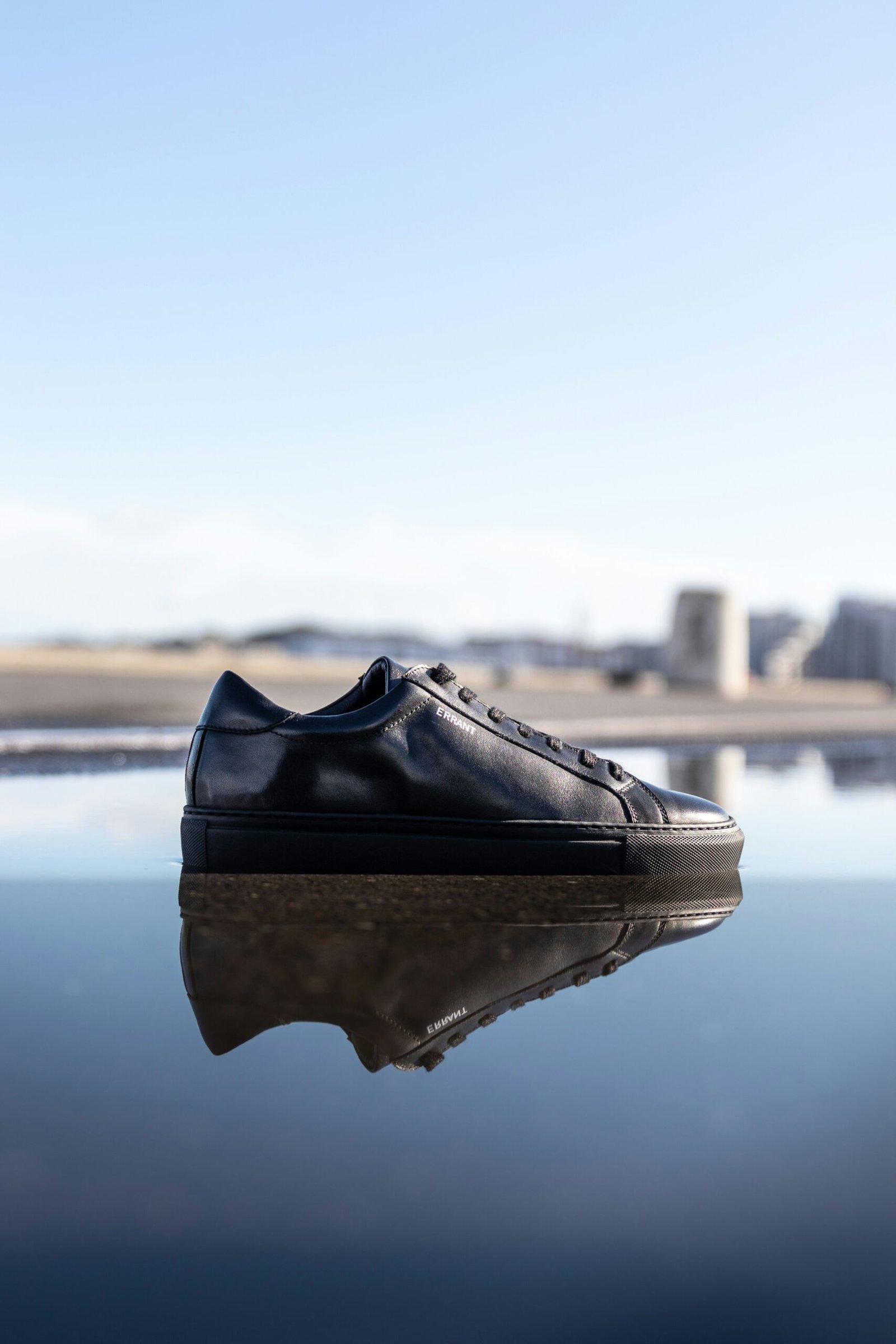When it comes to choosing a wallet, the quality of the leather plays a crucial role in determining its longevity and durability. In the world of Western wallets, where style meets functionality, paying attention to the leather quality becomes even more important. From the softness of the leather to the intricate craftsmanship, every detail matters. In this article, you will discover the significance of leather quality and craftsmanship in Western wallets, and why investing in a high-quality wallet is a decision that will pay off in the long run.

This image is property of images.unsplash.com.
Types of Leather Used in Western Wallets
Full Grain Leather
Full grain leather is the highest quality and most desirable type of leather used in Western wallets. This type of leather is made from the topmost layer of the animal hide, which retains the natural grain and imperfections. Full grain leather is durable, ages beautifully, and develops a unique patina over time. It is known for its strength, thickness, and resistance to wear and tear.
Top Grain Leather
Top grain leather is the second highest quality leather used in Western wallets. It is made by splitting the top layer of the animal hide, removing any imperfections or blemishes. While it may not have the natural grain of full grain leather, top grain leather is still durable and retains much of the strength and appearance of full grain leather. It is often more affordable than full grain leather, making it a popular choice among wallet manufacturers.
Genuine Leather
Genuine leather is a broadly used term that can be misleading. Contrary to what the name implies, genuine leather is not necessarily a mark of high quality. In fact, genuine leather is often the lowest quality leather used in Western wallets. It is made from the layers of the animal hide that are left after the top grain has been removed. While this type of leather is still real leather, it lacks the strength, durability, and natural aging characteristics of full grain and top grain leather.
Bonded Leather
Bonded leather is the lowest quality leather used in Western wallets. It is made by shredding or grinding leftover scraps of leather and then mixed with adhesive materials to form a new sheet. Bonded leather often has a plastic-like texture and lacks the natural qualities of authentic leather. It is less durable and prone to peeling or wearing out quickly. While bonded leather may be more affordable, it is important to consider the trade-off in terms of quality and longevity.
Characteristics of High-Quality Leather
Durability
High-quality leather, such as full grain and top grain leather, is known for its exceptional durability. It can withstand daily use, resist scratches and punctures, and maintain its structural integrity over time. The thick and tight fibers of top-quality leather make it less likely to tear or stretch, ensuring that your wallet will last for years to come.
Natural Aging
One of the unique characteristics of high-quality leather is its ability to age naturally and develop a beautiful patina over time. As leather wallets are exposed to sunlight, oils, and everyday use, they develop a unique personality and charm. Each scratch or mark tells a story, making your wallet truly one-of-a-kind.
Softness
High-quality leather is not only durable but also soft and supple to the touch. Through proper tanning and finishing processes, the leather becomes smooth and comfortable, making it a pleasure to handle and use. The softness of the leather enhances the overall user experience and adds a luxurious feel to the wallet.
Unique Grain Patterns
Each animal hide has its own distinct grain pattern, making every piece of high-quality leather truly unique. The natural grain patterns add texture and character to the wallet, elevating its aesthetic appeal. The variations in the grain give each wallet its own identity, allowing you to choose a wallet that reflects your personal style.

This image is property of images.unsplash.com.
Implications of Leather Quality
Longevity and Durability
The quality of leather used in Western wallets directly impacts their longevity and durability. Investing in a wallet made from high-quality leather ensures that it will withstand daily use and retain its structural integrity for an extended period. The durability of the leather eliminates the need for frequent replacements, providing you with a long-lasting accessory that can endure the test of time.
Appearance and Aesthetics
The quality of leather significantly affects the overall appearance and aesthetics of Western wallets. High-quality leather has a luxurious and sophisticated look, enhancing the overall appeal of the wallet. The aging process and unique grain patterns give the wallet a distinct and personalized touch, making it stand out among others. When you own a wallet made from top-quality leather, you can exude style and elegance.
Functionality and Practicality
The reliability of a wallet depends on the quality of the leather used. High-quality leather ensures that your wallet can withstand the demands of everyday use without deteriorating or losing its functional aspects. The durability and softness of the leather contribute to its practicality, allowing for easy access to cards and cash while maintaining the wallet’s shape and structure.
Value for Money
Investing in a wallet made from high-quality leather offers excellent value for money. While the upfront cost may be higher compared to wallets made from lower quality leather or synthetic materials, the durability and longevity of the wallet make it a cost-effective choice in the long run. A well-crafted, high-quality leather wallet can serve you faithfully for many years, making it a wise investment.
Leather Sources and Sustainable Practices
Ethical Sourcing
As a conscious consumer, knowing the leather sources and the practices involved in its production is essential. High-quality leather is often sourced from reputable suppliers who adhere to ethical principles. This means that the animals used for leather production are treated humanely and in accordance with strict regulations.
Environmental Impact
Leather production can have a significant environmental impact if not managed responsibly. Sustainable practices include minimizing water usage, reducing the use of harmful chemicals, and implementing waste management strategies. High-quality leather wallets often prioritize utilizing environmentally friendly processes to minimize their footprint.
Tannery Regulations
Tanneries play a crucial role in leather production, and adherence to strict regulations ensures the quality and safety of the leather. Reliable Western wallet manufacturers partner with tanneries that comply with international standards and regulations, guaranteeing that the leather used in their products meets the highest quality standards.
Certifications and Labels
Certifications and labels provide assurance that the leather used in Western wallets adheres to specific sustainability standards. Look out for certifications such as the Leather Working Group (LWG) certification, which ensures that the leather used has been responsibly sourced and produced. This helps you make informed and conscious decisions when purchasing a high-quality leather wallet.

This image is property of images.unsplash.com.
Craftsmanship and Attention to Detail
Handmade vs. Machine-made
The level of craftsmanship and attention to detail can vary depending on whether a wallet is handmade or machine-made. Handmade wallets require skilled artisans who meticulously craft each piece, ensuring precision and quality. Machine-made wallets, on the other hand, are produced in large quantities, sacrificing some of the personalized touches and meticulous finishing found in handmade products.
Stitching Techniques
The stitching technique used in a wallet can greatly impact its durability and overall quality. High-quality leather wallets often feature reinforced stitching, such as saddle stitching, which involves two needles and a strong thread passing through the same holes in an overlapping pattern. This method ensures that the stitching remains intact even if one thread breaks, maximizing the longevity of the wallet.
Edge Finishing
The edge finishing of a wallet is another essential aspect of its craftsmanship. High-quality leather wallets usually have well-edged edges that are smooth and polished. The edges are often burnished or painted to create a clean and refined look while providing additional protection against wear and fraying. Attention to detail in edge finishing enhances the overall aesthetic appeal and longevity of the wallet.
Hardware Quality
The hardware used in Western wallets, such as clasps, zippers, and buckles, contributes to their overall quality. High-quality leather wallets often feature sturdy and durable hardware that complements the craftsmanship of the wallet. Quality hardware ensures that the wallet functions smoothly and withstands regular use without compromising its structural integrity.
Factors Affecting Leather Quality
Animal Breed and Age
The breed of the animal from which the leather is sourced can affect its quality. Certain breeds are known for producing leather with desirable characteristics, such as thickness and durability. The age of the animal also plays a role, as younger animals typically have softer and more supple hides compared to older animals.
Tanning Process
The tanning process significantly influences the quality and characteristics of leather. Proper tanning enhances the leather’s durability, softness, and resistance to water and stains. Traditional vegetable tanning, which uses natural materials, is often considered more environmentally friendly and results in unique and richly colored leather.
Treatment and Finishing
The treatments and finishing processes applied to leather can affect its appearance, feel, and durability. High-quality leather is treated with care, using dyes and oils to enhance its color and softness. Finishing techniques may involve buffing, polishing, or embossing the leather to achieve the desired texture and appearance.
Leather Grade
Leather is graded based on its quality, with different grades available for different purposes. Top grain and full grain leathers are considered higher grades due to their strength, durability, and natural characteristics. Lower grades, such as genuine leather and bonded leather, may lack the same level of quality and are often used for less expensive products.
Different Wallet Styles and Leather Requirements
Bifold Wallets
Bifold wallets are a popular choice for their compact size and practical design. They consist of two sections that fold in half, providing ample space for cards, cash, and IDs. Bifold wallets often require a durable and flexible leather that can withstand frequent folding and unfolding while maintaining its shape.
Trifold Wallets
Trifold wallets offer even more storage space with their three-fold design. They typically have multiple card slots, a spacious bill compartment, and sometimes even additional pockets for coins or keys. Trifold wallets benefit from a sturdy and thick leather that can withstand the added weight and keep the wallet firmly closed.
Slim Wallets
Slim wallets have gained popularity for their minimalist design and slim profile. These wallets are ideal for those who prefer carrying only essential cards and a few bills. Slim wallets require a thinner and lightweight leather that still maintains its durability and strength.
Money Clip Wallets
Money clip wallets provide a unique combination of functionality and convenience. They feature a money clip to securely hold cash and a few card slots for essential cards. While the front portion of the wallet often requires a sturdier leather, the back panel can be made from a softer and more flexible leather to ensure a comfortable grip.
Caring for Leather Wallets
Proper Storage
To ensure the longevity of your leather wallet, proper storage is essential. When not in use, store your wallet in a cool and dry place away from direct sunlight and extreme temperatures. Avoid storing it in a tightly-packed or compressed position, as this can cause creases or deformities in the leather.
Cleaning and Conditioning
Regular cleaning and conditioning can help maintain the quality and appearance of your leather wallet. Use a soft, lint-free cloth to gently wipe away any dirt or stains. For conditioning, choose a leather conditioner specifically formulated for your wallet’s leather type and follow the manufacturer’s instructions.
Avoiding Extreme Conditions
Leather wallets are sensitive to extreme conditions, including excessive heat, cold, and moisture. Avoid exposing your wallet to direct sunlight for prolonged periods, as this can cause fading or drying of the leather. Similarly, protect your wallet from extreme cold or damp environments that can lead to cracking or mold growth.
Preventive Maintenance
Taking preventive measures can further protect and prolong the life of your leather wallet. Avoid overstuffing your wallet, as this can strain the leather and lead to stretching or deformation. Be mindful of sharp objects that can scratch or puncture the leather and remove any items that may cause excess pressure on the wallet.
Recognizing High-Quality Leather
Visual Inspection
A visual inspection can reveal a lot about the quality of leather used in a wallet. Look for consistent coloring, even stitching, and well-structured edges. High-quality leather often has a natural sheen and texture, with minimal blemishes or imperfections. Take note of the overall craftsmanship and attention to detail, as these are indicators of a well-made wallet.
Touch and Feel
The touch and feel of leather can give valuable insights into its quality. High-quality leather should feel smooth, supple, and slightly warm to the touch. It should not feel overly stiff, rough, or plasticky. Run your fingers across the leather to assess its texture and softness, paying attention to any inconsistencies or irregularities.
Grain Patterns
Grain patterns are unique to each piece of leather and can vary in appearance and texture. High-quality leather often has well-defined and consistent grain patterns that add character to the wallet. Look for the natural variations and markings that indicate genuine and full grain leather, as this suggests a higher quality and authenticity.
Brand Reputation
The reputation of the brand can provide insight into the quality of the leather used in their wallets. Established brands with a long-standing reputation for producing high-quality leather goods are more likely to prioritize craftsmanship and source their leather from reputable suppliers. Research the brand’s history, customer reviews, and testimonials to ensure that you are investing in a wallet of exceptional quality.
The Impact of Leather Quality on Brand Reputation
Brand Image and Perception
The quality of leather used in Western wallets directly contributes to the brand’s image and perception. A brand that consistently delivers high-quality leather goods creates the perception of craftsmanship, sophistication, and luxury. Customers are more likely to associate the brand with quality and value, which can enhance its overall reputation and standing in the market.
Customer Satisfaction and Loyalty
Providing customers with wallets made from high-quality leather ensures their satisfaction and fosters loyalty. A well-crafted and durable wallet not only meets customer expectations but surpasses them, resulting in a positive customer experience. Satisfied customers are more likely to become repeat customers and advocates for the brand, promoting loyalty and generating positive word-of-mouth.
Word-of-Mouth Marketing
The quality of leather in Western wallets can generate significant word-of-mouth marketing for a brand. When customers are impressed with the quality, durability, and aesthetics of their wallet, they are more inclined to share their positive experiences with others. Word-of-mouth recommendations carry great weight, influencing potential customers and expanding the brand’s reach.
Long-Term Success and Growth
Consistently delivering high-quality leather products contributes to a brand’s long-term success and growth. A strong reputation for quality attracts new customers, fosters customer loyalty, and positions the brand as a leader in the market. By prioritizing leather quality and craftsmanship, a brand can establish itself as a trusted and reliable source for Western wallets, ensuring its continued growth and success.
In conclusion, the importance of leather quality in Western wallets cannot be overstated. The type of leather, its characteristics, and the craftsmanship involved play a significant role in the durability, aesthetics, and value of the wallet. Understanding the implications of leather quality, recognizing the factors that affect it, and caring for your leather wallet can help you make informed decisions and ensure that you enjoy a high-quality accessory that will stand the test of time. Remember, investing in a wallet made from top-quality leather not only enhances your style and sophistication but also reflects your commitment to supporting sustainable and ethical practices.
